Mastering the art of coffee means having a vast knowledge of many areas of this drink. But you can begin with some basics. For instance, learning how to ask for coffee and getting exactly what you want. And perhaps by doing it like this, you discover your new favourite way of drinking coffee (ours are all of them). We revise the most well-known coffees, as well as a few local favourites, to help you achieve your goal of becoming a new coffee professor with or without a good coffee maker.
How to ask for an espresso (and double espresso)
Italy’s espresso coffee is probably the best. It is very intense, short, with cream, and the basis for other coffees. It is coffee without milk, sugar, or any other ingredient, and it is called just “caffè” in Italy. His older brother, double espresso, is what it sounds like two “espresso” together, a doppio. You can prepare it at home with a Barista or an espresso coffee machine, at least. Don’t think too much about the cream on top because it is not important to the most relevant part of this coffee: its flavour.
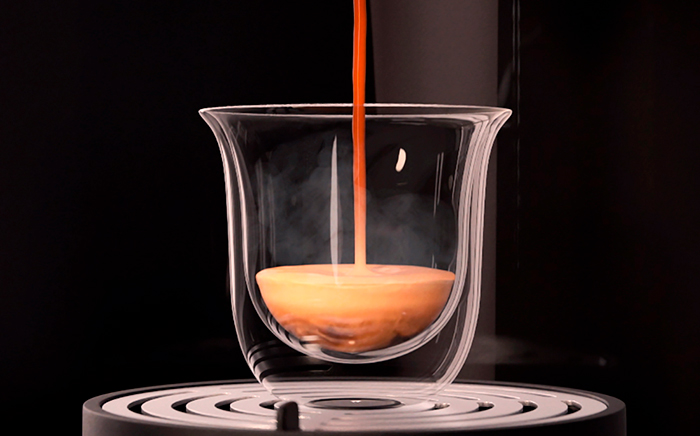
For your information, if you are lucky enough to ask for coffee in Italy, don’t ask for an espresso. They invented it. Just ask for coffee, and they will know what you want. You will probably get a glass of water with your coffee as well. OK, you have to drink that water before you drink your coffee. It is supposed to clean your palate, so you can taste the espresso better. Do NOT drink it after the coffee.
Ristretto
Ristretto is a delicious choice for coffee lovers. It is a short espresso, made with less hot water. The result is a very concentrated coffee, more intense, sweeter than espresso, less bitter. Usually, it is a one-shot kind of coffee, but you can have the taste of a good ristretto on your palate for hours, and it is hard to forget.
American coffee
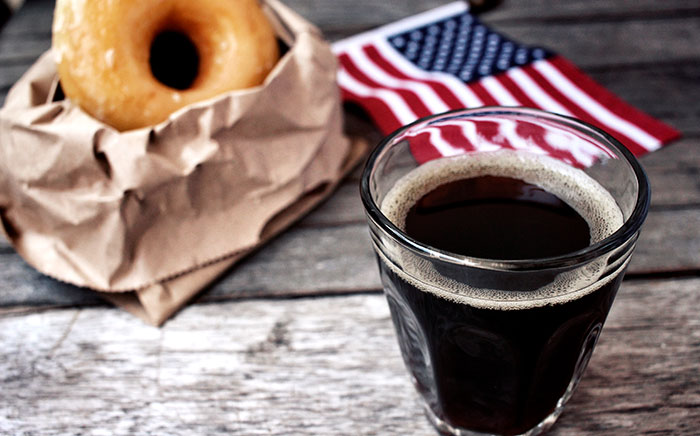
An Americano is prepared with espresso and hot water. You can also use a filter coffee maker to make it. The flavour is less intense and, therefore, less bitter. This coffee is good for breakfast, and it is a good choice for those who find espresso too strong.
Caffè Latte
The famous caffè latte is made with three or two parts of milk and one part of coffee. In everyday life, we know that this ratio is random. So feel free to do whatever you like the most at home with the espresso base. But please, use a milk frother, or try to make it with an espresso coffee maker. The taste of the milk softens the delicious bitterness of the espresso.
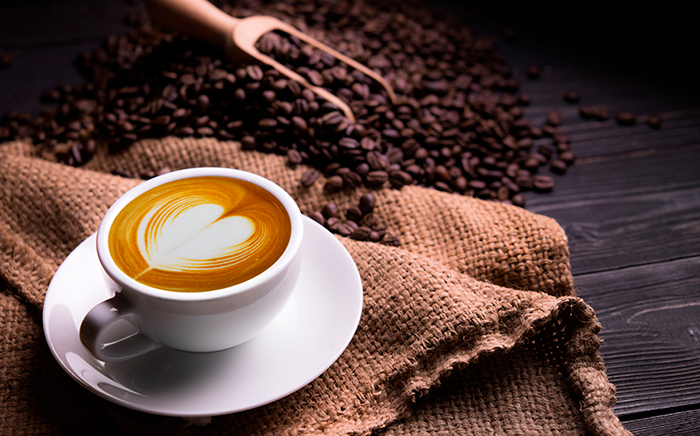
Capuccino
Many people actually think that this coffee has whipping cream. NO. That is a Vienna coffee. A cappuccino is made with a black espresso or two, milk, and milk foam. Things like sprinkling cocoa or cinnamon on top, or even drawing figures that look like a Rorschach test if the waiter isn’t very good, came later. The best temperature to serve a cappuccino is 140° F, so watch out.
Macchiato
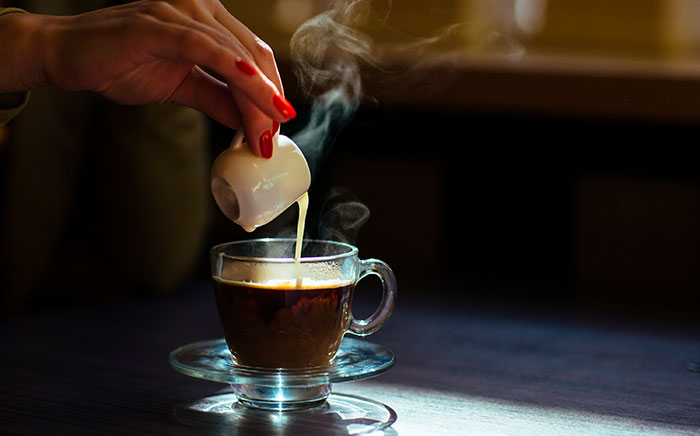
With a macchiato, you can expect a coffee with just a bit of milk, like a stain, in your espresso (actually, that is what macchiato means, a stain.) The milk adds a hint of flavour without altering the espresso’s taste very much. It’s better if you choose to use milk foam. It can also be a long macchiato.
A latte macchiato means the order of the ingredients changes. Instead of making coffee and then adding milk, we pour milk first and then the coffee.
Cortado
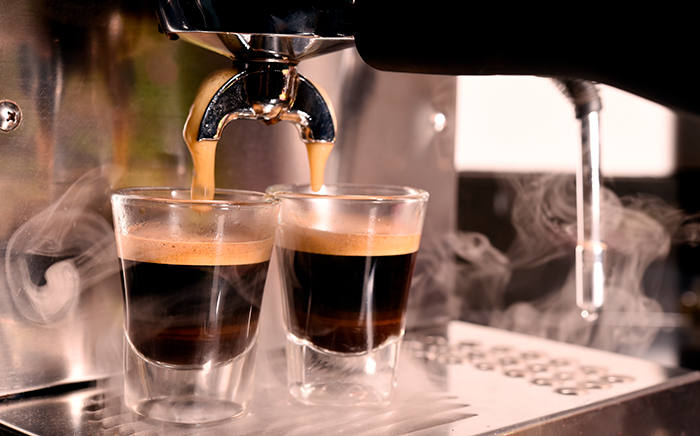
Cortado is a type of coffee in Spain. Basically, it is an espresso that has as much milk as coffee. This coffee has no milk foam or similar. It is coffee and a dash of milk, period. Some people (dads) can really get angry if the quantity of milk is not the exact amount they want. No jokes with coffee.
Vienna coffee
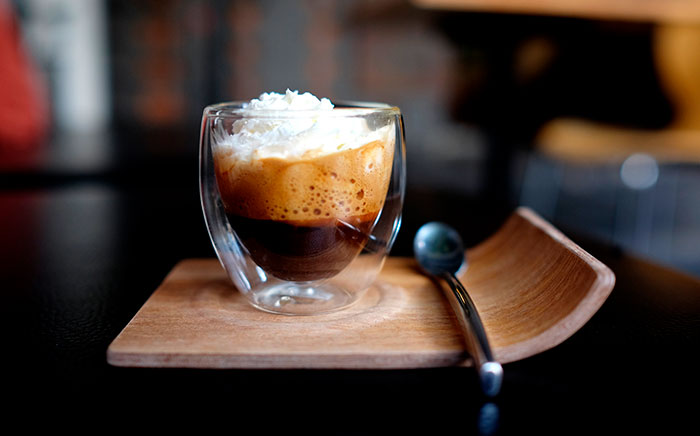
Here it comes: the Vienna coffee has whipping cream on top. His name comes from the city where this coffee was born, Vienna, in Austria. The Vienna coffee does not require sugar; the whipping cream adds a sweet touch, and the base for this type of coffee is, as you might expect (all together, loud): an espresso. Or even a doppio.
Café bombón
Too much sugar, yes, but it tastes great. This coffee has a tablespoon of condensed milk (or one part espresso and one part condensed milk). Both ingredients have different densities, so they create two separate layers, and it is served in crystal glass, so you can see this contrast. You can also find the condensed milk + coffee + milk foam variant. If you ask for this coffee, be sure to get a glass of water too; you will need it.

Mocha o mocassino
Coffee + chocolate = mocassino coffee. The best of both worlds. Not for coffee lovers exactly, but good for others. Add a spoonful of cocoa powder over the espresso. You can use dark, milk, or white chocolate. A coffee variant for those who love sugar or if you want an evening coffee.
Carajillo
Carajillo is popular in Spain, or at least, it was. It’s an espresso with liquor, usually cognac, brandy, or any other anise-flavoured beverage. There are many countries with this type of coffee, with different liquors, quantities, and names. In Italy, a caffè corretto is a shot of espresso served with a bit of liquor, like Sambuca. It is common to take it after dinner or even lunch because it is digestive. But we do not recommend this for breakfast, definitely.

There are many ways of enjoying coffee beyond using it as a source of caffeine. You can taste, practice and enjoy all these coffees at home with a good coffee maker, like a Barista. In this case, with many options to use any capsule, make yourself an Italian-proof coffee, and even make your own milk foam. Now, get down to coffee work.

